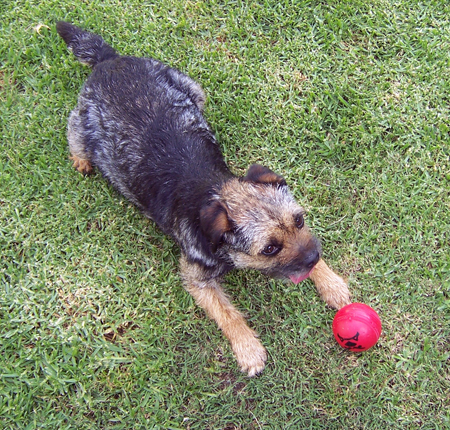Puppies – The Sixth Week
This would normally be the week where the puppies socialise heaps, but unfortunately it was very hot, and we didn’t get the puppies out anywhere near as much as we’d like to.
While up until now the puppies had been confined to a pen outside, they started to have greater access to the backyard during the last week.
On the 13th of December I took both Kelinni and Boomer out, and they each met about 20 people each.
On the 16th of December, we had a somewhat different socialisation experience. My partner volunteers for the State Emergency Service and they were having a Christmas lunch in a park. In lieu of carrying puppies in the park for several hours, we brought a puppy pen and had the puppies on the ground – something that we never do! However, I think the risks of parvo were minimal: We placed the puppies on a tarp, so they didn’t have direct contact with the soil, the park is in a medium-high socio economic area where most people would vaccinate their dogs, the Christmas lunch was deep in the park, and because you have pay to drive to get your car in, there’s probably less people that attend this part of the park with their dogs.

The puppy pen set up. We chose to sit back from the rest of the group in respect for non-puppy-lovers.
The socialisation opportunities were huge – and actually bigger than I expected. I actually just thought there would be a bunch of men at the Christmas function, and I really wanted more socialisation with my puppies to men. But it turns out there where heaps of kids there, too! So it was very much worth attending. Continue reading




